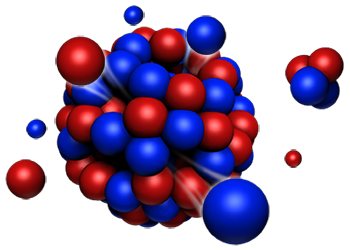Speaker
Description
The Rutherford Appleton Laboratory has over 60 years of history with proton accelerator operations and neutron science. Since 1983 the “ISIS Spallation Neutron and Muon Source” has continued this work. Now ISIS must manage the ongoing generation of radioactive waste and deal with both its and the site’s historic radioactive legacy.
The formation of radioactivity is an undesirable, yet unavoidable by-product of the presence of free neutrons and high energy protons. Radioactivity is produced in the target environment, accelerator components, target services, beamline components, user samples, instruments and associated equipment. Whilst perhaps the most challenging wastes are the highly active target, moderator, reflectors and support structures, these represent only a minute fraction of the radioactive waste generated, with the vast majority or radioactive waste being very low-level but impacting almost all parts of ISIS operations. The accumulation and disposal of radioactive waste is strictly regulated and the specifics of how wastes are managed at ISIS is closely intertwined with UK Government policy as well as national and European legislation. The challenge of managing radioactive waste at ISIS is to ensure compliance with these regulations, minimize radioactive waste and minimize harm to the environment, all whilst supporting cutting edge science.
In this presentation I explore radioactive waste at a spallation neutron source, the types and nature of radioactive wastes formed, along with the techniques used to manage, characterize and dispose of those wastes. I share the mistakes made, lessons learnt, and the recent progress made in managing radioactive wastes at ISIS.
Finally, I report on the recent investment ISIS has made to its radioactive waste team and facilities, which are working to manage its radioactive legacy and support a major improvement programme for Target 1, LINAC and instruments in 2020/21 that will result in an intense period of radioactive waste generation.

